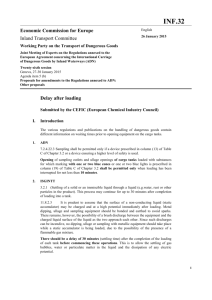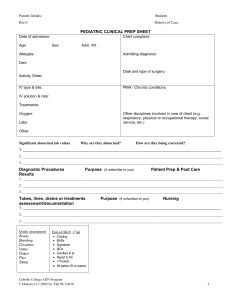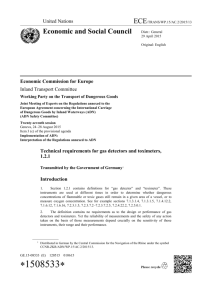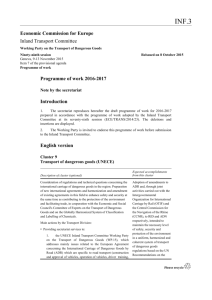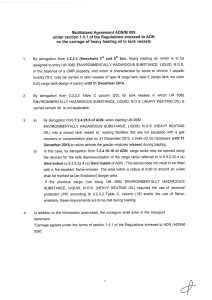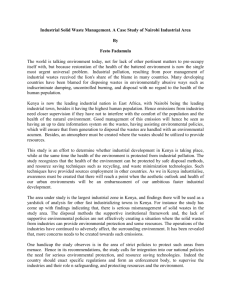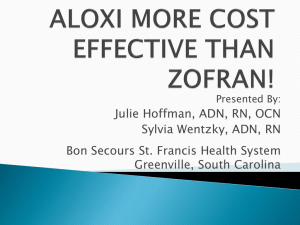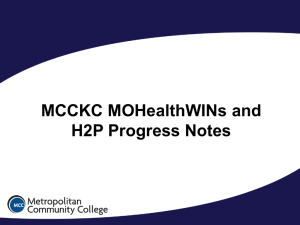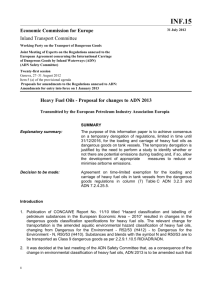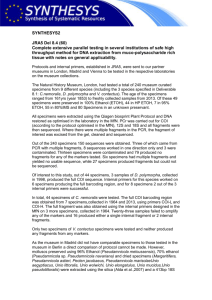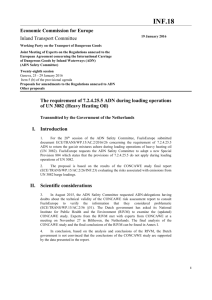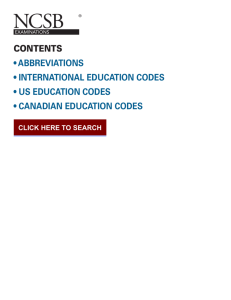INF - unece
advertisement
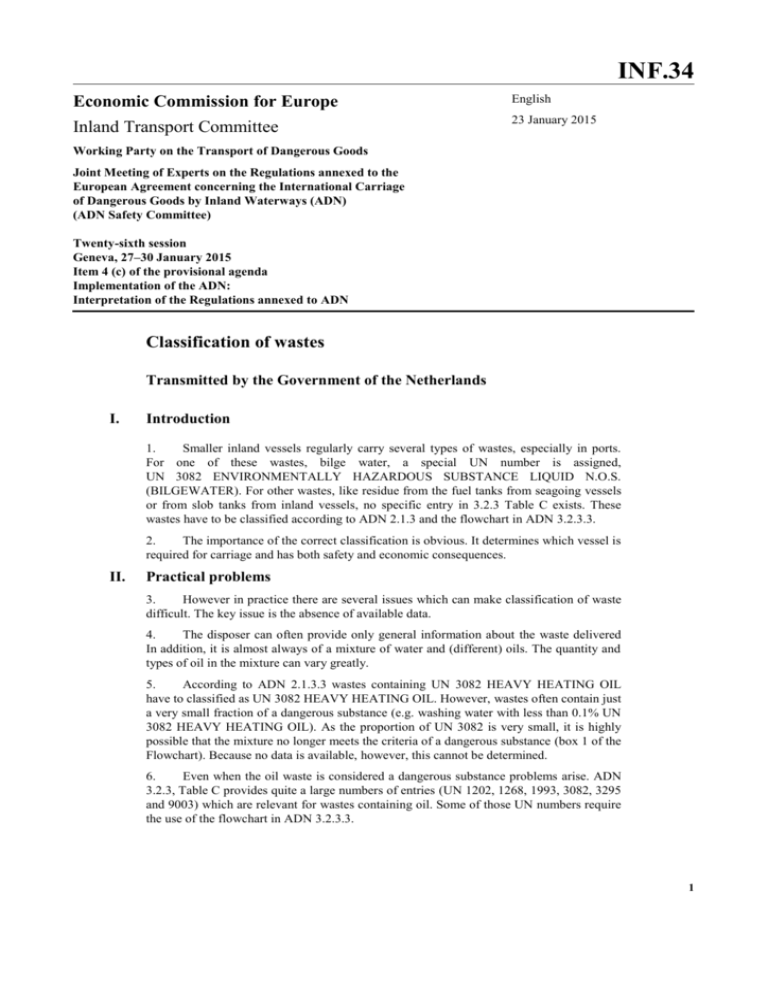
INF.34 Economic Commission for Europe English Inland Transport Committee 23 January 2015 Working Party on the Transport of Dangerous Goods Joint Meeting of Experts on the Regulations annexed to the European Agreement concerning the International Carriage of Dangerous Goods by Inland Waterways (ADN) (ADN Safety Committee) Twenty-sixth session Geneva, 27–30 January 2015 Item 4 (c) of the provisional agenda Implementation of the ADN: Interpretation of the Regulations annexed to ADN Classification of wastes Transmitted by the Government of the Netherlands I. Introduction 1. Smaller inland vessels regularly carry several types of wastes, especially in ports. For one of these wastes, bilge water, a special UN number is assigned, UN 3082 ENVIRONMENTALLY HAZARDOUS SUBSTANCE LIQUID N.O.S. (BILGEWATER). For other wastes, like residue from the fuel tanks from seagoing vessels or from slob tanks from inland vessels, no specific entry in 3.2.3 Table C exists. These wastes have to be classified according to ADN 2.1.3 and the flowchart in ADN 3.2.3.3. 2. The importance of the correct classification is obvious. It determines which vessel is required for carriage and has both safety and economic consequences. II. Practical problems 3. However in practice there are several issues which can make classification of waste difficult. The key issue is the absence of available data. 4. The disposer can often provide only general information about the waste delivered In addition, it is almost always of a mixture of water and (different) oils. The quantity and types of oil in the mixture can vary greatly. 5. According to ADN 2.1.3.3 wastes containing UN 3082 HEAVY HEATING OIL have to classified as UN 3082 HEAVY HEATING OIL. However, wastes often contain just a very small fraction of a dangerous substance (e.g. washing water with less than 0.1% UN 3082 HEAVY HEATING OIL). As the proportion of UN 3082 is very small, it is highly possible that the mixture no longer meets the criteria of a dangerous substance (box 1 of the Flowchart). Because no data is available, however, this cannot be determined. 6. Even when the oil waste is considered a dangerous substance problems arise. ADN 3.2.3, Table C provides quite a large numbers of entries (UN 1202, 1268, 1993, 3082, 3295 and 9003) which are relevant for wastes containing oil. Some of those UN numbers require the use of the flowchart in ADN 3.2.3.3. 1 INF.34 7. For example, a mixture of kerosene wash water and wash water gas oil is classified as UN 3295 HYDROCARBONS LIQUID, N.O.S. PG III. Using the flowchart requires data on the flash point, eco toxicity, CMR properties and whether or not the waste is a Floater or a Sinker. These data are not known and, except for the flash point, are not easily determined during the collection. III. Further discussion in the informal working group on substances 8. The Dutch delegation will prepare a document on this issue to be discussed during the next meeting of the Informal Working Group on Substances, which is scheduled for the 19th and the 20th of March in Strasbourg. 9. As an input for this document the Dutch delegation would like to request the different delegations to check how the classification of wastes is done in their countries, and to put their findings in an email to the Dutch delegation. If this could be done before the 1st of March this would leave enough time to include the findings and practises of other ADN countries in the document to be prepared for the informal working group. 2
